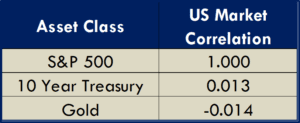Are You Happy with Your Fixed Income Investments?
Fixed income investing has become something like exercising on a stair climber – you’re exhausted but you haven’t gotten anywhere. Why?
Yields have been falling for four decades. While interest in the U.S. dollar has not gone negative yet, it has for the Swiss franc, the euro, the pound, and the yen. Despite recent talk by the Federal Reserve, interest rates are likely to stay well below historical levels. The 10 year Treasury yields 1.5% at the time of writing this, “up” from an all time low of 0.53% in August, 2020.
It gets worse though. Consider that the U.S. dollar has long been subject to debasement by the Federal Reserve. Its policy is to seek 2% dollar debasement per year, but it may sometimes overshoot. This is commonly understood as inflation risk. Thanks to inflation, not only is that 1.5% interest you earn losing value, but your dollar principal is likely to be worth less at maturity than when first invested.
This is significant. Advisors will have a difficult time defending a decision to keep bonds in client portfolios with such low yields, and inflation risk.
Investors are already seeking alternatives due to the risks outlined above. What strategies can advisors offer?
A common response to the low-rate challenge is to take on more risk, i.e. invest further in equities, real estate investment trusts (REITs), junk bonds or maybe even crypto-currency. But this is not always suitable, especially for older clients or anyone else who cannot afford risking loss of principal – one of the main reasons they are attracted to fixed income investing.
An Alternative – Gold Fixed Income Investments
There is an alternative that addresses the concerns outlined above – Gold Fixed Income. The return of the market for interest on gold (yes, there is a market where investors can earn interest on gold) gives investors an alternative to the zero-interest rate policy and currency debasement by the Federal Reserve.
Gold is not subject to debasement by central banks. By contrast to interest on dollars, interest on gold does not have to be adjusted for inflation. If you earn 3% interest on gold, you have a real 3% gain. And because gold has proven to retain its value over long periods of time, your principal remains secure as well.
Moreover, like bonds, gold has a low to negative correlation to equities. See the following table.

Low correlation between asset classes is the core of an effective diversification strategy. This makes gold a strong candidate to effectively diversify a client’s portfolio of assets. We take a deeper drive into the potential role of Gold Fixed Income in client portfolios in our white paper The Case for Gold Yield in Investment Portfolios.
Gold Fixed Income addresses the problems ailing fixed income investors today. For advisors who want to retain fixed income assets in client portfolios, and who may be considering gold as well, it could prove an effective alternative.
This article was originally published in Wealth Management Magazine, a publication of Wealthmanagement.com


 :
:


